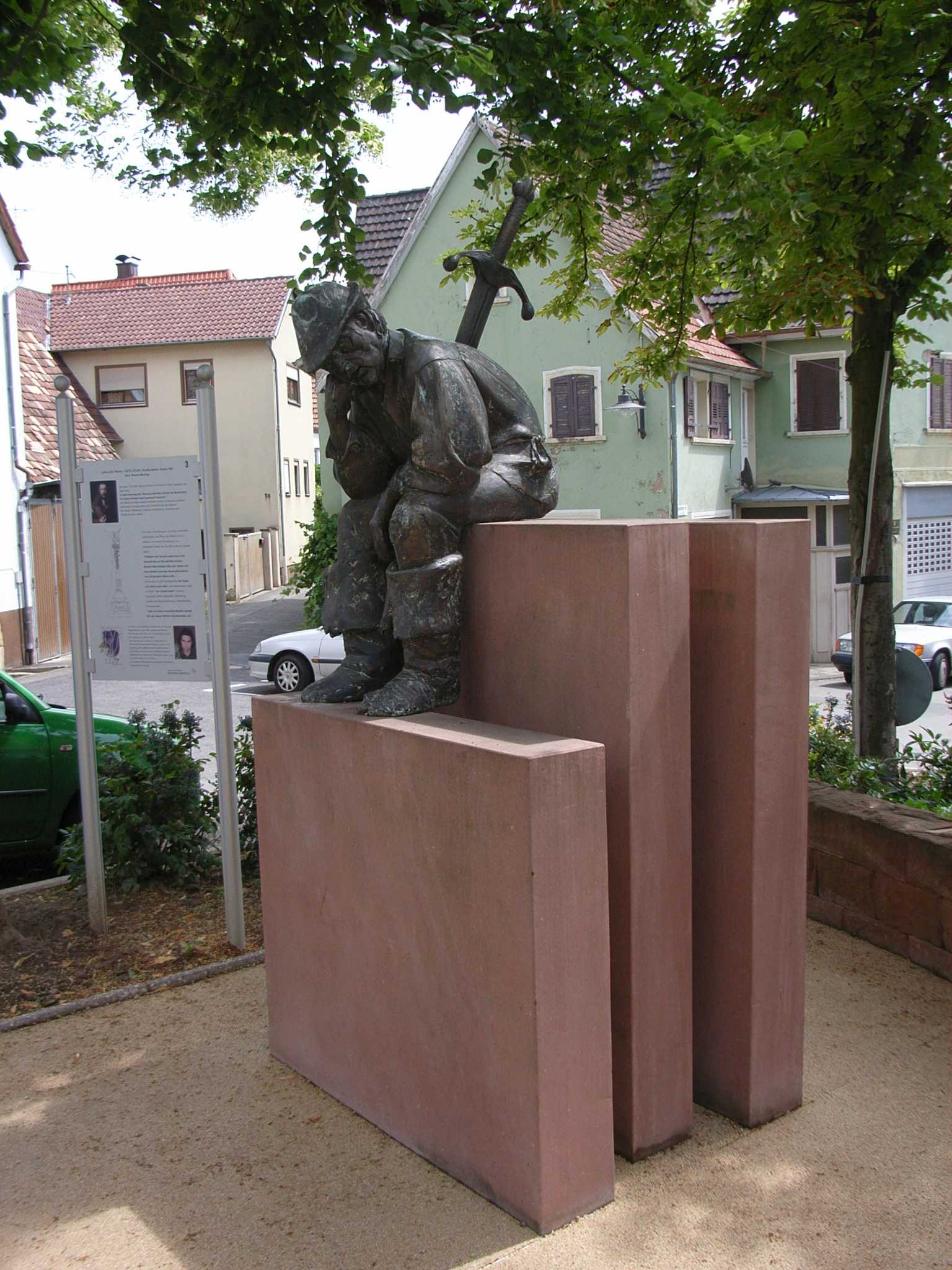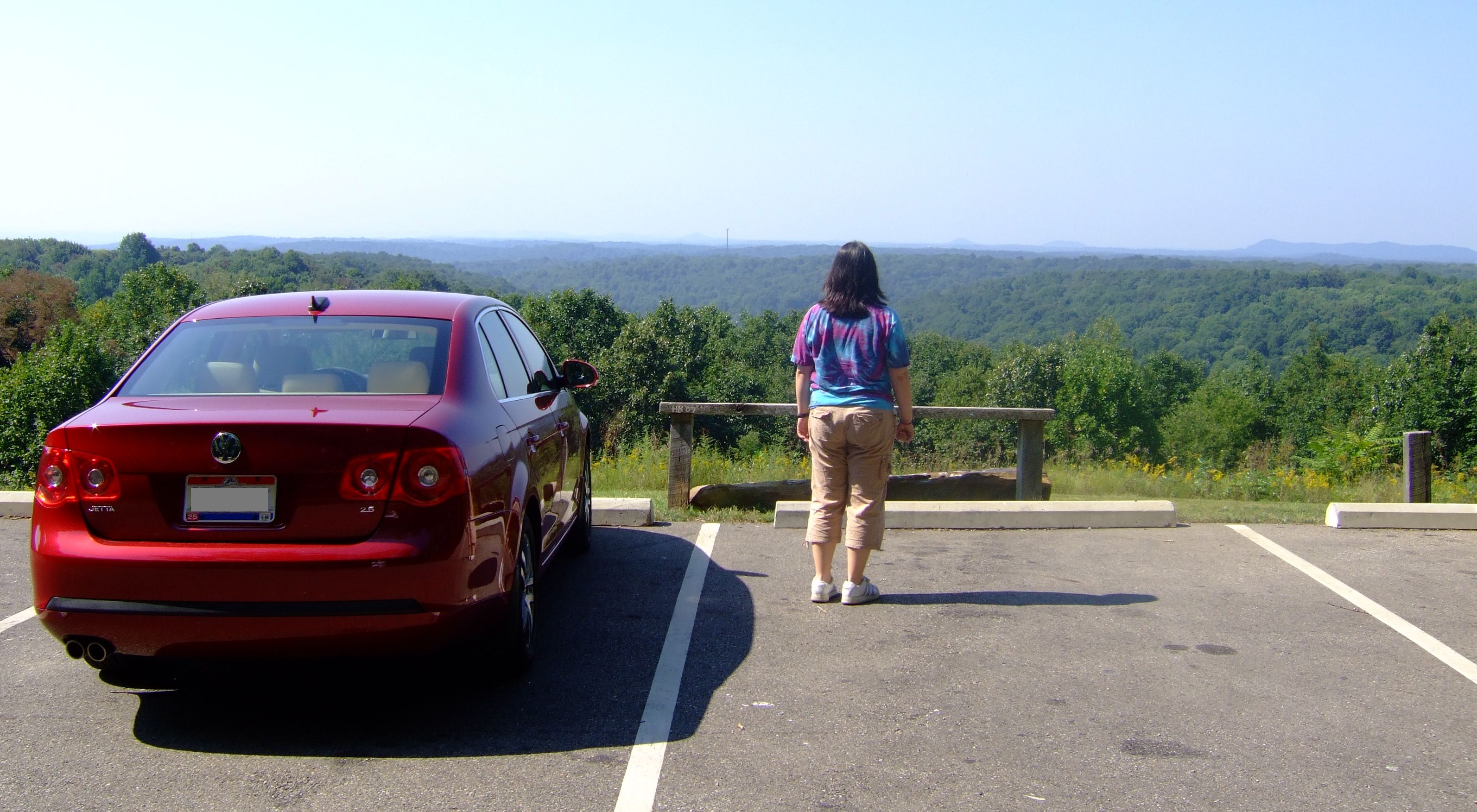|
Ruppertstein Castle
Ruppertstein Castle (german: Burg Ruppertstein) is the ruins of a hill castle located at an elevation of near the village of Lemberg in the collective municipality of Pirmasens-Land in the county of Südwestpfalz in the German state of Rhineland-Palatinate. It is situated on top of the Ruppertstein hill south of the village of Ruppertsweiler. History Little is known of the castle, which was probably built in the 13th century. Its history began in 1198 with the purchase by Henry I, Count of Zweibrücken, of the hill on which it was built. It was either destroyed in 1525 during the Palatine Peasants' War or had been allowed to fall into ruins by then. Around 1900 a stone stairway was built on the rocks in order to reach the terrace of the rock on which the castle stood, in order to use it as a viewing point A scenic viewpoint – also called an observation point, viewpoint, viewing point, vista point, lookout, scenic overlook,These terms are more commonly used in North Amer ... [...More Info...] [...Related Items...] OR: [Wikipedia] [Google] [Baidu] |
Hill Castle
A hill castle or mountain castle is a castle built on a natural feature that stands above the surrounding terrain. It is a term derived from the German ''Höhenburg'' used in categorising castle sites by their topographical location. Hill castles are thus distinguished from lowland castles (''Niederungsburgen''). Hill castles may be further subdivided depending on their situation into the following: * Hilltop castle (''Gipfelburg''), that stands on the summit of a hill with steep drops on all sides. A special type is the rock castle or ''Felsenburg''. * Ridge castle (''Kammburg''), that is built on the crest of a ridge. * Hillside castle (''Hangburg''), that is built on the side of a hill and thus is dominated by rising ground on one side. * Spur castle (''Spornburg''), that is built on a hill spur surrounded by steep terrain on three sides and thus only needs to be defended on the one remaining side. When in the 10th and 11th centuries castles lost their pure fortress charact ... [...More Info...] [...Related Items...] OR: [Wikipedia] [Google] [Baidu] |
Lemberg (Pfalz)
Lemberg is a municipality in Südwestpfalz district, in Rhineland-Palatinate, western Germany and belongs to the municipal association Pirmasens-Land Pirmasens-Land is a ''Verbandsgemeinde'' ("collective municipality") in the Südwestpfalz district, in Rhineland-Palatinate, Germany. It is situated on the southwestern edge of the Palatinate forest, around Pirmasens. The seat of the municipality i .... References Municipalities in Rhineland-Palatinate Südwestpfalz {{Südwestpfalz-geo-stub ... [...More Info...] [...Related Items...] OR: [Wikipedia] [Google] [Baidu] |
Ruins
Ruins () are the remains of a civilization's architecture. The term refers to formerly intact structures that have fallen into a state of partial or total disrepair over time due to a variety of factors, such as lack of maintenance, deliberate destruction by humans, or uncontrollable destruction by natural phenomena. The most common root causes that yield ruins in their wake are natural disasters, armed conflict, and population decline, with many structures becoming progressively derelict over time due to long-term weathering and scavenging. There are famous ruins all over the world, with notable sites originating from ancient China, the Indus Valley and other regions of ancient India, ancient Iran, ancient Israel and Judea, ancient Iraq, ancient Greece, ancient Egypt, Roman sites throughout the Mediterranean Basin, and Incan and Mayan sites in the Americas. Ruins are of great importance to historians, archaeologists and anthropologists, whether they were once individual f ... [...More Info...] [...Related Items...] OR: [Wikipedia] [Google] [Baidu] |
Lemberg (Palatinate)
Lemberg is a municipality in Südwestpfalz district, in Rhineland-Palatinate, western Germany and belongs to the municipal association Pirmasens-Land Pirmasens-Land is a ''Verbandsgemeinde'' ("collective municipality") in the Südwestpfalz district, in Rhineland-Palatinate, Germany. It is situated on the southwestern edge of the Palatinate forest, around Pirmasens. The seat of the municipality i .... References Municipalities in Rhineland-Palatinate Südwestpfalz {{Südwestpfalz-geo-stub ... [...More Info...] [...Related Items...] OR: [Wikipedia] [Google] [Baidu] |
Verbandsgemeinde
A Verbandsgemeinde (; plural Verbandsgemeinden) is a low-level administrative unit in the German federal states of Rhineland-Palatinate and Saxony-Anhalt. A Verbandsgemeinde is typically composed of a small group of villages or towns. Rhineland-Palatinate The state of Rhineland-Palatinate is divided into 163 Verbandsgemeinden, which are municipal associations grouped within the 24 districts of the state and subdivided into 2,257 Ortsgemeinden (singular Ortsgemeinde) which comprise single settlements. Most of the Verbandsgemeinden were established in 1969. Formerly the name for an administrative unit was ''Amt''. Most of the functions of municipal government for several municipalities are consolidated and administered centrally from a larger or more central town or municipality among the group, while the individual municipalities (Ortsgemeinden) still maintain a limited degree of local autonomy. Saxony-Anhalt The 11 districts of Saxony-Anhalt are divided into ''Verwaltungsgemein ... [...More Info...] [...Related Items...] OR: [Wikipedia] [Google] [Baidu] |
Pirmasens-Land
Pirmasens-Land is a ''Verbandsgemeinde'' ("collective municipality") in the Südwestpfalz district, in Rhineland-Palatinate, Germany. It is situated on the southwestern edge of the Palatinate forest, around Pirmasens. The seat of the municipality is in Pirmasens, itself not part of the municipality. The ''Verbandsgemeinde'' Pirmasens-Land consists of the following ''Ortsgemeinden'' ("local municipalities"): # Bottenbach # Eppenbrunn # Hilst # Kröppen # Lemberg # Obersimten # Ruppertsweiler # Schweix # Trulben Trulben is a municipality in Südwestpfalz district, in Rhineland-Palatinate, western Germany Germany,, officially the Federal Republic of Germany, is a country in Central Europe. It is the second most populous country in Europe aft ... # Vinningen {{Authority control Verbandsgemeinde in Rhineland-Palatinate ... [...More Info...] [...Related Items...] OR: [Wikipedia] [Google] [Baidu] |
Südwestpfalz
Südwestpfalz is a district (''Kreis'' or more precise ''Landkreis'') in the south of Rhineland-Palatinate, Germany. Neighboring districts are (from west clockwise) Saarpfalz, the district-free city Zweibrücken, the districts Kaiserslautern and Bad Dürkheim, the district-free city Landau (the Taubensuhl/Fassendeich forest part of the city), Südliche Weinstraße, and the French ''département'' Bas-Rhin. The district-free city Pirmasens is surrounded by the district. History The district was created 18 February 1818 as the ''Landkommisariat Pirmasens''. During the communal reforms of 1968-72, several changes were made to the district. In 1969, the neighboring district Bad Bergzabern was dissolved and some part of it was added, while other municipalities were incorporated into the city Pirmasens. In 1972, the district ''Landkreis Zweibrücken'' was dissolved and added into the district ''Landkreis Pirmasens'', which on 1 January 1997 renamed itself to ''Südwestpfalz''. Geogra ... [...More Info...] [...Related Items...] OR: [Wikipedia] [Google] [Baidu] |
Rhineland-Palatinate
Rhineland-Palatinate ( , ; german: link=no, Rheinland-Pfalz ; lb, Rheinland-Pfalz ; pfl, Rhoilond-Palz) is a western state of Germany. It covers and has about 4.05 million residents. It is the ninth largest and sixth most populous of the sixteen states. Mainz is the capital and largest city. Other cities are Ludwigshafen am Rhein, Koblenz, Trier, Kaiserslautern, Worms and Neuwied. It is bordered by North Rhine-Westphalia, Saarland, Baden-Württemberg and Hesse and by the countries France, Luxembourg and Belgium. Rhineland-Palatinate was established in 1946 after World War II, from parts of the former states of Prussia (part of its Rhineland and Nassau provinces), Hesse (Rhenish Hesse) and Bavaria (its former outlying Palatinate kreis or district), by the French military administration in Allied-occupied Germany. Rhineland-Palatinate became part of the Federal Republic of Germany in 1949 and shared the country's only border with the Saar Protectorate until the latter wa ... [...More Info...] [...Related Items...] OR: [Wikipedia] [Google] [Baidu] |
Ruppertsweiler
Ruppertsweiler is a municipality in Südwestpfalz district, in Rhineland-Palatinate, western Germany and belongs to the municipal association Pirmasens-Land Pirmasens-Land is a ''Verbandsgemeinde'' ("collective municipality") in the Südwestpfalz district, in Rhineland-Palatinate, Germany. It is situated on the southwestern edge of the Palatinate forest, around Pirmasens. The seat of the municipality i .... References Municipalities in Rhineland-Palatinate Palatinate Forest Südwestpfalz {{Südwestpfalz-geo-stub ... [...More Info...] [...Related Items...] OR: [Wikipedia] [Google] [Baidu] |
Henry I, Count Of Zweibrücken
Henry I of Zweibrücken (german: Heinrich I. von Zweibrücken, ?–1222) was the first count of the County of Zweibrücken founded in 1182 as the result of an inheritance division. He ruled until 1222. Life Henry was the younger of two sons of the Count of Saarbrücken, Simon I, to whose estate Zweibrücken Castle belonged. Whilst the older son was given Saarbrücken, the younger son received the eastern part of the region with Zweibrücken and the Lorraine fiefdoms of Lindres, Saargemünd and Marimont. In addition there were estates near Worms that belonged to the County of Zweibrücken. Henry is first recorded in 1196 in a treaty made with Emperor Henry VI. In this deed, he transferred his rights over the inherited ''Vogtei'' of Dirmstein to the empire. In 1198, he concluded a deed of exchange with Abbot Wernher of Hornbach Abbey, in which he acquired the hills of "Gutinberg" and the "Ruprechtisberg". Lemberg Castle was built on the former and Ruppertstein Castle on the la ... [...More Info...] [...Related Items...] OR: [Wikipedia] [Google] [Baidu] |
Palatine Peasants' War
The Palatine Peasants' War (german: pfälzische Bauernkrieg) was part of the general German Peasants' War on the Middle and Upper Rhine. The uprising in the Palatine Electorate and its surrounding area took place in April to June 1525. History The start of the German Peasants' War in West Rhenish Palatinate was marked by the gathering of a band of peasants, a so-called ''Haufe'', at Nußdorf near Landau on 23 April 1525. The Palatine peasant mobs plundered several surrounding monasteries (including the Knights Hospitaller commandry of Heimbach near Zeiskam as well as Hördt, where the provost was killed) and castles, before they took Neustadt on 6 May without a fight. The peasants' programme was based on the Twelve Articles, which were drawn up at Memmingen and of which 25,000 copies were printed. A second ''Haufe'' gathered near Bockenheim. As a result, the Palatine prince-elector, Louis V felt forced into negotiations with the Geilweiler and Bockenheim groups; these began ... [...More Info...] [...Related Items...] OR: [Wikipedia] [Google] [Baidu] |
Viewing Point
A scenic viewpoint – also called an observation point, viewpoint, viewing point, vista point, lookout, scenic overlook,These terms are more commonly used in North America. etc. – is an elevated location where people can view scenery (often with binoculars) and photograph it. Scenic viewpoints may be created alongside scenic routes or mountain roads, often as simple turnouts or lay-bys where motorists can pull over onto pavement, gravel, or grass on the right-of-way. Many viewpoints are larger, having parking areas, while some (typically on larger highways) are off the road completely. Viewing points may also be found on hill or mountain tops or on rocky spurs overlooking a valley and reached via a hiking trail. They may be protected by railings to protect the public or be enhanced by a viewing tower designed to elevate visitors above the surrounding terrain or trees in order to offer panoramic views. Overlooks are frequently found in national parks, and in the U.S. along n ... [...More Info...] [...Related Items...] OR: [Wikipedia] [Google] [Baidu] |



